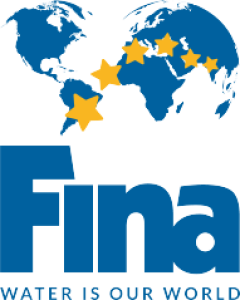The 2024 Short Course World Championships Through The Eyes Of A Volunteer

12/31/2024 09:00 AM
By SwimSwam Contributors on SwimSwam
courtesy Kevin Majoros
Courtesy: Kevin Majoros
In 2019, I went with a group of my USMS teammates to watch the International Swimming League in Washington, DC. During the event, one of my teammates mentioned volunteering for the next day's session. I thought it sounded like an amazing opportunity and made a mental note to consider it in the future.
Fast-forward through the pandemic and another one of my teammates was preparing to volunteer at the 2024 USA Swimming Olympic trials. The barrier for him was that they were requiring a commitment of six days of work.
When I learned that I would be in Budapest during the 2024 World Aquatics Swimming World Championships (SCM), I logged onto their website to buy spectator tickets – and that's when I found the volunteer application. Again, it was at least a six-day commitment plus one day of orientation, but it seemed like an opportunity that should not be passed up.
courtesy Kevin Majoros
In the volunteer application, I was told to select three roles from a long list of job placements. My placement was with the Sports Presentation team, which meant I was part of everything that contributed to the spectacle of the event – from the medal ceremonies to the athlete introductions.
The first day was rehearsals for the medal ceremonies, which included the camera team, the announcers, and the presenters. Even though it was just staged preparation, it was incredibly surreal to stand on the gold medal platform and hear my national anthem. The second day was rehearsals for the spinning platform that spun the finalists and semifinalists onto the pool deck for their introductions. We rehearsed it repeatedly to get the timing right for the announcers and the camera team. Again, it was surreal to bust out from the introduction and go to my assigned lane.
During those few days, they were still completing the build-out of Duna Arena to what it would look like on the first day of racing. We walked through every part of the arena during orientation to prepare ourselves for what was about to happen. I had competed there in 2017 at the Masters World Championships, but it was eye-opening to see it from another perspective. The competition pool was built by the organizers in the center of their permanent 50-meter pool, and both ends served other purposes. That was a surprise for me.
One day, a colleague came over to me and said in Hungarian, 'There's a lion in locker room 12. Don't go in there.' I nodded in confusion, thinking it was a strange directive. Turns out, I missed the Hungarian word for 'mascot,' and the ‘lion’ was just part of the event's branding. Context is everything.
The athletes were there in full force on the night before the competition was set to begin. A coworker and I were given a list of forty expected medalists who had not completed their intro videos. We were sent by the organizers out into the 50,000-square-foot Duna Arena and told to find them and bring them to the video center.
This was an amazing experience as I was interacting with my international swimming heroes. The athletes were flung out in multiple areas of the arena, and each country was labeled with its flag, not the country name. Thankfully, my European coworker was better versed in international flags than I am, and we found all the athletes. I can now identify the flags of Hong Kong, Turkey, and the Cayman Islands.
The next several nights of competition, I had two jobs. The first job was to shadow the MCs during the pre-show activities with the spectators. This was another fun experience, which included running from one end of the arena to the other to get different viewpoints for the camera team.
courtesy Kevin Majoros
The second job was working in the medal ceremony room, which meant I was given the opportunity to interact with all the medalists. We were there to assist the swimmers, confirm their uniforms met the guidelines, and have them sign the medalist board.
The timeline of every day was adhered to without fail. The athletes were sent from one end of the arena to the other – warmup, ready room, navigate this spinning platform, competing, go here to be congratulated by your teammates, march this way for photos, interviews, anti-doping, medal ceremony, and warm down.
By the end of my experience, I had a deeper respect for the athletes, who manage a constant juggling act of intense preparation and public performance. The roar of the crowd, especially for the Hungarian swimmers, gave me goosebumps that I'll carry with me forever. I left with unforgettable memories and new friendships with coworkers from around the world. The camaraderie, the unforgettable moments, and the thrill of being part of such a monumental event were worth every second.
If this volunteer opportunity ever comes up for anyone who is a swimming fan, I suggest they consider taking the leap.
Kevin Majoros is a Washington, D.C based USMS Coach and Masters’ swimmer.
Read the full story on SwimSwam: The 2024 Short Course World Championships Through The Eyes Of A Volunteer


